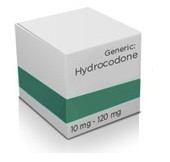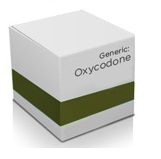Contents
What is Hydrocodone
Hydrocodone is a Generic name for an opioid drug which is synthesized from codeine, an opioid alkaloid that can be found in the opium poppy.
This drug is narcotic analgesic which is used orally for relieving the moderate to severe pain, but it is also commonly used in liquid form as an antitussive agent for symptomatic relief of nonproductive cough, alone or together with other cough suppressants or expectorants.
This drug works by changing the way the brain and nervous system respond to pain. As an analgesic, hydrocodone is usually combined with ibuprofen, acetaminophen or aspirin for pain treatment.
The analgesic action of hydrocodone starts in 20–30 minutes and lasts for about 4–8 hours. However, hydrocodone is only used for the treatment of patients who are expected to need painkiller for severe pain for a long time, and who cannot be treated with other medicines or treatments.
Hydrocodone is predominantly prescribed in the US. According to the the International Narcotics Control Board, 99% of the worldwide hydrocodone supply in 2007 was consumed in the US.
Other Brand names on the market containing hydrocodone are: Hysingla ER, Zohydro ER, Norco, Vicodin and Robidone.
What is Oxycodone
Oxycodone is a Generic name for an opioid narcotic drug containing same name active ingredient that is used for moderate to severe pain relief. As a narcotic analgesic, oxycodone is more potent and addicting than its related compound codeine.
Oxycodone is available in the form of tablet (extended or immediate release), capsule and solution in following strengths: 5, 10, 15, 20, 30, 40 and 80 mg. The extended-release form of this drug is for around-the-clock therapy of pain.
This form of oxycodone is not for use on an as-needed basis for pain. Oxycodone dose should be adjusted individually, according to the pain severity and the patient response.
The dose can be exceeded in patients who have more severe pain or in those who become tolerant to the opioids analgesic effects.
Other products on the market containing oxycodone are: OxyCONTIN, Oxecta, Oxyfast, OxyIR, M-Oxy, Roxicodone, ETH-Oxydose, Percolone, Endocodone, Dazidox, Roxicodone Intensol, Oxaydo.
How does Hydrocodone and Oxycodone work in the body
Hydrocodone is an opioid agonist of opioid receptors within the CNS. This morphinans structure substance blocks pain perception in the cerebral cortex of the brain.
Hydrocodone decreases synaptic chemical transmission in the CNS, which in turn inhibits pain sensation into the higher centers of the brain. Agonist activities at the μ and kappa receptors can cause analgesia, miosis, and decreased body temperature.
Agonist activity at the μ receptor can also cause the suppression of opiate withdrawal, while antagonist activity can result in precipitation of withdrawal.
Hydrocodone acts at several locations within the CNS by involving several systems of neurotransmitters to produce analgesia, but the precise mechanism of action has not been fully understood.
Opiate agonists don’t change the threshold or responsiveness of afferent nerve endings to noxious stimuli nor the conduction of impulses along peripheral nerves.
Instead, they alter the perception of pain at the spinal cord and higher concentrations in the CNS and the person’s emotional response to pain.
Hydrocodone can produce inhibition at the chemoreceptors through μ-opioid receptors and in the medulla through μ and δ receptors which can lead to dose-related respiratory depression.
Oxycodone is a weak agonist of μ – mu, κ – kappa, and δ – delta opioid receptors within the CNS. Oxycodone predominantly affects μ opioid receptors, which are binded with G-protein receptors complex and acts as modulators, both negative and positive, of synaptic transmission through G-proteins that trigger effector proteins.
Oxycodone decrease intracellular levels of cAMP by inhibiting enzyme called adenylate cyclase and release of nociceptive neurotransmitters such as GABA, dopamine, substance P, acetylcholine, and noradrenaline.
Oxycodone can also inhibit hormone release of somatostatin, insulin, vasopressin, and glucagon. As κ -receptor agonist oxycodone closes N-type voltage-operated calcium channels, while as μ and δ receptor agonist, oxycodone opens calcium-dependent potassium channels. The results are hyperpolarization and reduced neuronal excitability.
Can patients take Hydrocodone and Oxycodone together
Patients should never take hydrocodone and oxycodone together at the same time. These drugs belong to the same pharmacological class and have very similar effects in the body.
Taking them together patients may increase the risk of side effects to happen. The most serious side effect that can happen during administration of these drugs combination is slowing or stopping of breathing (respiratory depression) which could cause death.
Patients could also experience higher level of drowsiness, dizziness, nausea and sedation. The best option for patient is to stick with one medicine and adjust the dose to achieve pain relief as directed by physician.
The table below shows side effects after Hydrocodone and Oxycodone administration in recommendable doses. The incidence can be significantly increased if these drugs are overdosed or taken together.
| Very common side effects >10% | Constipation (8-11%) |
| Common side effects 1-10% | Nausea (7-10%), Headache (4%), Vomiting (3-5%), Somnolence (1-5%), UTI (1-5%), Dry mouth (3%), Pruritus (3%), Tremor (3%), Fatigue (1-4%), Back pain (1-4%), Dizziness (2-3%), Peripheral edema (1-3%), URI infection (1-3%) and Muscle spasms (1-3%), Decreased appetite (2%), Tinnitus (2%), Insomnia (3%), Influenza (3%) |
Special precautions and warnings during Hydrocodone and Oxycodone administration:
- Patients should tell their doctor and pharmacist if they are allergic to hydrocodone or oxycodone or any other medicines, or any of the ingredients that are used in the production of hydrocodone extended-release capsules or extended-release tablets.
- Patients should tell their doctors or pharmacists what prescription and nonprescription medicines, vitamins or nutritional supplements they are taking or plan to take.
- Patients should also tell their doctors if they are using any of the following medications: antihistamines; dronedarone (Multaq); medications for irritable bowel disease, Parkinson’s disease, ulcers, haloperidol (Haldol); azithromycin (Zithromax, Zmax); amiodarone (Cordarone, Pacerone, Nexterone); butorphanol;chlorpromazine; citalopram (Celexa); laxatives such as lactulose (Cholac, Constulose, Enulose, others); nalbuphine; or pentazocine (Talwin), levofloxacin (Levaquin).
- They should also tell their doctors if they are taking the following medications or have stopped taking them within the past two weeks: isocarboxazid (Marplan), selegiline (Eldepryl, Emsam, Zelapar), phenelzine (Nardil), rasagiline (Azilect), or tranylcypromine (Parnate). Doctor may need to change the doses of medicines or monitor carefully for side effects.
- These drugs shouldn’t be used if patient has blockage of stomach or intestines, or paralytic ileus.
- Patients should tell their doctor if they have or have ever had hypotension, difficulties with urinating, seizure attacks, or any of the thyroid, liver, kidney, gall bladder or pancreas disease.
- If patients are taking the extended-release tablets, they should tell their doctor if they have or have ever had difficulties with swallowing, colon cancer, esophageal cancer, heart failure or heart rhythm problems such long QT syndrome.
- Patients should tell their doctor if they are breastfeeding.
- If patients are having surgery, including dental surgery, they should tell their doctor or dentist that they are taking hydrocodone or oxycodone.
- Hydrocodone and Oxycodone may make patients drowsy. Patients should not drive a car or operate machinery.
- Hydrocodone and Oxycodone may cause dizziness, fainting and lightheadedness, if patient get up too quickly from a lying position. This is more common when initial dose of hydrocodone is taken. To avoid this problem, patients should slowly get out of bed, resting their feet on the floor for a few minutes before standing up.
- Hydrocodone and Oxycodone can cause constipation. Patients should talk with their doctor about changing diet and using other medications to treat or prevent constipation.


